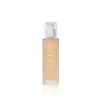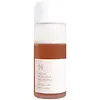What's inside
What's inside
 Key Ingredients
Key Ingredients

 Benefits
Benefits

 Concerns
Concerns

No concerns
 Ingredients Side-by-side
Ingredients Side-by-side

Bacillus Ferment Filtrate
Skin ConditioningDipropylene Glycol
HumectantButylene Glycol
HumectantGlycerin
Humectant1,2-Hexanediol
Skin ConditioningOpuntia Ficus-Indica Stem Extract
Skin ConditioningPolyglyceryl-10 Laurate
Skin ConditioningAmmonium Acryloyldimethyltaurate/Vp Copolymer
Trehalose
HumectantAdenosine
Skin ConditioningTheobroma Cacao Seed Extract
AntioxidantTromethamine
BufferingTocopherol
AntioxidantOpuntia Ficus-Indica Seed Oil
EmollientCeramide NP
Skin ConditioningPhytosphingosine
Skin ConditioningHydrogenated Lecithin
EmulsifyingEthylhexylglycerin
Skin ConditioningDisodium EDTA
Parfum
MaskingBenzyl Salicylate
PerfumingHexyl Cinnamal
PerfumingBacillus Ferment Filtrate, Dipropylene Glycol, Butylene Glycol, Glycerin, 1,2-Hexanediol, Opuntia Ficus-Indica Stem Extract, Polyglyceryl-10 Laurate, Ammonium Acryloyldimethyltaurate/Vp Copolymer, Trehalose, Adenosine, Theobroma Cacao Seed Extract, Tromethamine, Tocopherol, Opuntia Ficus-Indica Seed Oil, Ceramide NP, Phytosphingosine, Hydrogenated Lecithin, Ethylhexylglycerin, Disodium EDTA, Parfum, Benzyl Salicylate, Hexyl Cinnamal
Water
Skin ConditioningTriethylhexanoin
MaskingHydrogenated Poly(C6-14 Olefin)
Emollient1,2-Hexanediol
Skin ConditioningMethylpropanediol
SolventButylene Glycol
HumectantGlycerin
HumectantTrilaureth-4 Phosphate
EmulsifyingCamellia Sinensis Leaf Extract
AntimicrobialSaccharomyces Ferment Filtrate
HumectantCamellia Sinensis Leaf Water
MaskingHelianthus Annuus Seed Oil Unsaponifiables
EmollientPolyquaternium-51
Skin ConditioningSodium Hyaluronate
HumectantEthylhexylglycerin
Skin ConditioningHydrogenated Lecithin
EmulsifyingDextrin
AbsorbentTheobroma Cacao Seed Extract
AntioxidantCentella Asiatica Extract
CleansingFicus Carica Fruit Extract
HumectantSchisandra Chinensis Fruit Extract
Skin ConditioningAmaranthus Caudatus Seed Extract
Skin ConditioningUlmus Davidiana Root Extract
Skin ConditioningCeramide NP
Skin ConditioningTocopherol
AntioxidantWater, Triethylhexanoin, Hydrogenated Poly(C6-14 Olefin), 1,2-Hexanediol, Methylpropanediol, Butylene Glycol, Glycerin, Trilaureth-4 Phosphate, Camellia Sinensis Leaf Extract, Saccharomyces Ferment Filtrate, Camellia Sinensis Leaf Water, Helianthus Annuus Seed Oil Unsaponifiables, Polyquaternium-51, Sodium Hyaluronate, Ethylhexylglycerin, Hydrogenated Lecithin, Dextrin, Theobroma Cacao Seed Extract, Centella Asiatica Extract, Ficus Carica Fruit Extract, Schisandra Chinensis Fruit Extract, Amaranthus Caudatus Seed Extract, Ulmus Davidiana Root Extract, Ceramide NP, Tocopherol
 Reviews
Reviews

Ingredients Explained
These ingredients are found in both products.
Ingredients higher up in an ingredient list are typically present in a larger amount.
1,2-Hexanediol is a synthetic liquid and another multi-functional powerhouse.
It is a:
- Humectant, drawing moisture into the skin
- Emollient, helping to soften skin
- Solvent, dispersing and stabilizing formulas
- Preservative booster, enhancing the antimicrobial activity of other preservatives
Butylene Glycol (or BG) is used within cosmetic products for a few different reasons:
Overall, Butylene Glycol is a safe and well-rounded ingredient that works well with other ingredients.
Though this ingredient works well with most skin types, some people with sensitive skin may experience a reaction such as allergic rashes, closed comedones, or itchiness.
Learn more about Butylene GlycolCeramide NP is a type of ceramide.
Ceramides are intercellular lipids naturally found in our skin that bonds dead skin cells together to create a barrier. They are known for their ability to hold water and thus are a great ingredient for dry skin.
Ceramides are an important building block for our skin barrier. A stronger barrier helps the skin look more firm and hydrated. By bolstering the skin ceramides act as a barrier against irritating ingredients. This can help with inflammation as well.
If you would like to eat ceramides, sweet potatoes contain a small amount.
Read more about other common types of ceramides here:
Ceramide AP
Ceramide EOP
Ethylhexylglycerin (we can't pronounce this either) is commonly used as a preservative and skin softener. It is derived from glyceryl.
You might see Ethylhexylglycerin often paired with other preservatives such as phenoxyethanol. Ethylhexylglycerin has been found to increase the effectiveness of these other preservatives.
Glycerin is already naturally found in your skin. It helps moisturize and protect your skin.
A study from 2016 found glycerin to be more effective as a humectant than AHAs and hyaluronic acid.
As a humectant, it helps the skin stay hydrated by pulling moisture to your skin. The low molecular weight of glycerin allows it to pull moisture into the deeper layers of your skin.
Hydrated skin improves your skin barrier; Your skin barrier helps protect against irritants and bacteria.
Glycerin has also been found to have antimicrobial and antiviral properties. Due to these properties, glycerin is often used in wound and burn treatments.
In cosmetics, glycerin is usually derived from plants such as soybean or palm. However, it can also be sourced from animals, such as tallow or animal fat.
This ingredient is organic, colorless, odorless, and non-toxic.
Glycerin is the name for this ingredient in American English. British English uses Glycerol/Glycerine.
Learn more about GlycerinHydrogenated Lecithin is created from the hydrogenation of lecithin (a group of phospholipids). Hydrogenation is a chemical reaction between hydrogen and another element.
This ingredient is an emollient and emulsifier. As an emollient, it helps soften skin by trapping moisture within. As an emulsifier, it prevents oil and water ingredients from separating.
Theobroma Cacao Seed Extract comes from the Theobroma cacoa, or Cacao tree. Cacao trees are native to tropical landscapes.
Cacao seed extract contains antioxidants known as polyphenols.
Tocopherol (also known as Vitamin E) is a common antioxidant used to help protect the skin from free-radicals and strengthen the skin barrier. It's also fat soluble - this means our skin is great at absorbing it.
Vitamin E also helps keep your natural skin lipids healthy. Your lipid skin barrier naturally consists of lipids, ceramides, and fatty acids. Vitamin E offers extra protection for your skin’s lipid barrier, keeping your skin healthy and nourished.
Another benefit is a bit of UV protection. Vitamin E helps reduce the damage caused by UVB rays. (It should not replace your sunscreen). Combining it with Vitamin C can decrease sunburned cells and hyperpigmentation after UV exposure.
You might have noticed Vitamin E + C often paired together. This is because it is great at stabilizing Vitamin C. Using the two together helps increase the effectiveness of both ingredients.
There are often claims that Vitamin E can reduce/prevent scarring, but these claims haven't been confirmed by scientific research.
Learn more about Tocopherol